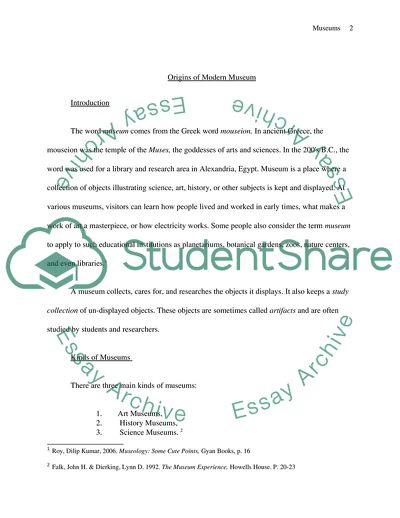Cite this document
(Origins of Modern Museum Essay Example | Topics and Well Written Essays - 2500 words, n.d.)
Origins of Modern Museum Essay Example | Topics and Well Written Essays - 2500 words. Retrieved from https://studentshare.org/history/1723313-explain-the-origins-of-the-modern-museum
Origins of Modern Museum Essay Example | Topics and Well Written Essays - 2500 words. Retrieved from https://studentshare.org/history/1723313-explain-the-origins-of-the-modern-museum
(Origins of Modern Museum Essay Example | Topics and Well Written Essays - 2500 Words)
Origins of Modern Museum Essay Example | Topics and Well Written Essays - 2500 Words. https://studentshare.org/history/1723313-explain-the-origins-of-the-modern-museum.
Origins of Modern Museum Essay Example | Topics and Well Written Essays - 2500 Words. https://studentshare.org/history/1723313-explain-the-origins-of-the-modern-museum.
“Origins of Modern Museum Essay Example | Topics and Well Written Essays - 2500 Words”. https://studentshare.org/history/1723313-explain-the-origins-of-the-modern-museum.


